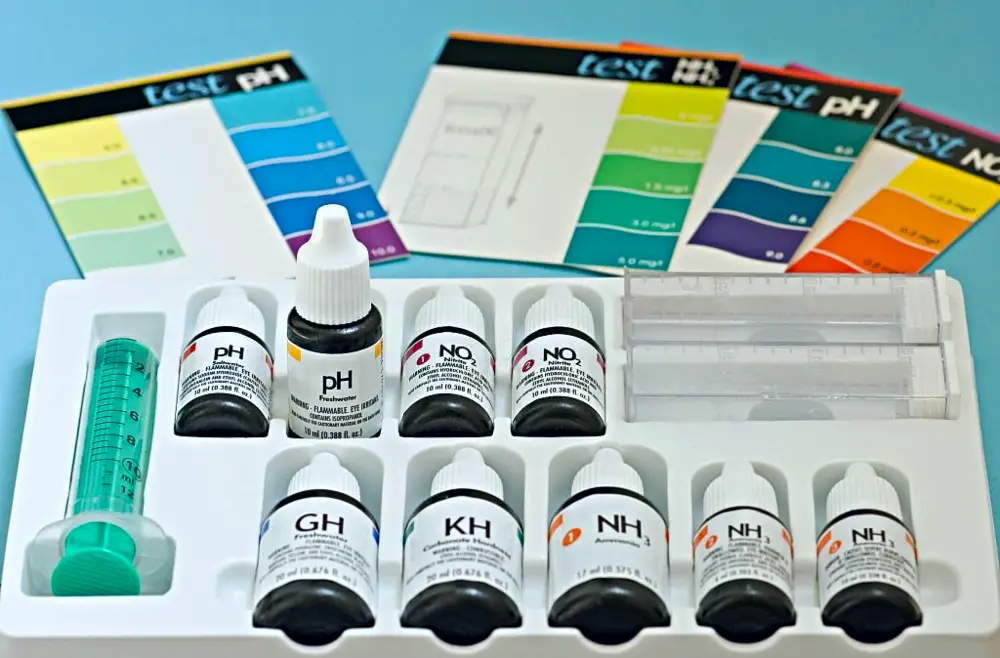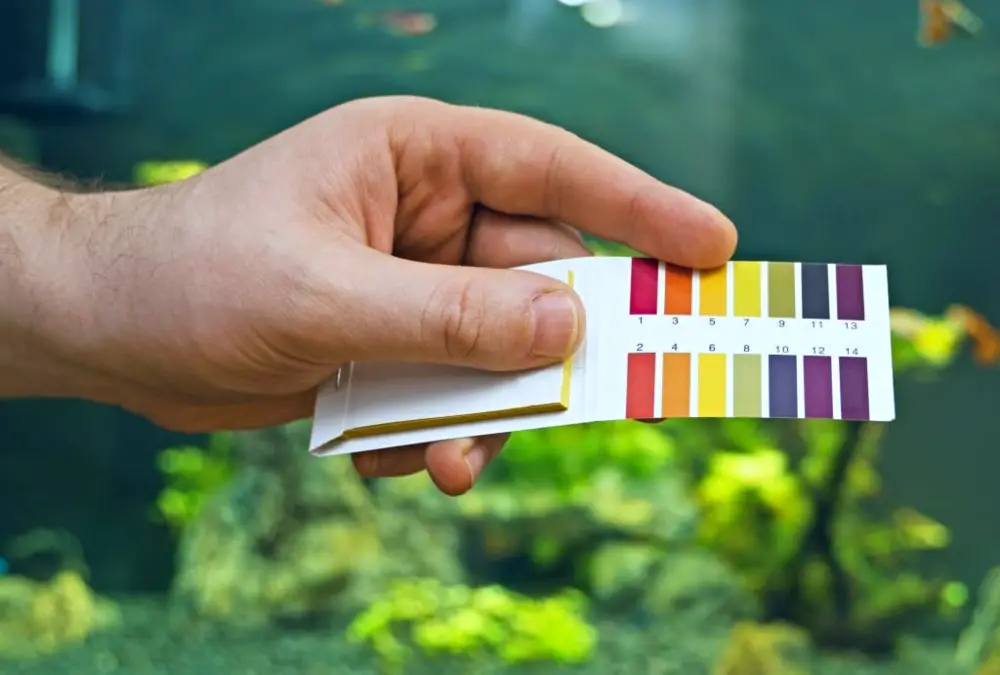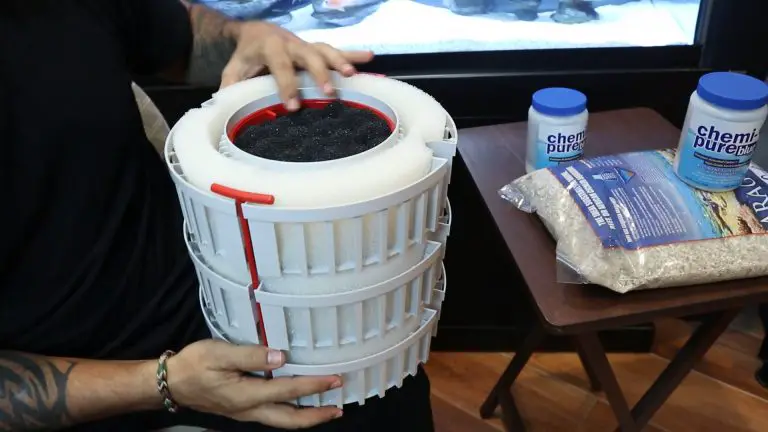5 Causes of High pH in Aquariums: Understanding The pH Puzzle
Ever wondered what causes high pH in aquariums? As fish-keeping enthusiasts, we know that maintaining the right pH level is crucial for the health and well-being of our aquatic friends. In this guide, we’ll unravel the mysteries behind high pH in aquariums and explore the possible causes behind this imbalance. From alkaline water to pH imbalances, we’ll uncover the culprits responsible for pushing your aquarium’s pH levels higher than desired.
Understanding these factors is key to creating a thriving aquatic environment. So, let’s jump in and discover the secrets behind high pH in freshwater aquariums!
What Is pH and Its Significance?
pH is a fundamental concept in the world of aquariums, as it plays a crucial role in the health and well-being of our aquatic inhabitants. Simply put, pH measures the acidity or alkalinity of a substance. In the case of aquariums, it refers to the acidity or alkalinity of the water in which our fish and plants live.
The pH scale ranges from 0 to 14, with 7 being considered neutral. Values below 7 indicate acidity, while values above 7 indicate alkalinity. For most freshwater aquariums, the ideal pH range lies between 6.8 and 7.6, which is slightly acidic to slightly alkaline.
Maintaining proper pH levels is essential because it directly impacts the overall health, growth, and behavior of our aquatic friends. Fish and plants have specific pH preferences based on their natural habitats, and a pH imbalance can lead to stress, weakened immune systems, and even disease. Additionally, pH influences the effectiveness of biological processes and the availability of essential nutrients.
To ensure a thriving aquarium, it’s crucial to regularly monitor and adjust the pH levels as needed. By understanding the significance of pH and its impact on our aquatic ecosystem, we can take proactive steps to maintain a balanced and harmonious environment for our beloved fish and plants. In the next section, we’ll explore the culprits behind high pH in aquariums and how to address them effectively.
The 5 Causes of High pH in Aquariums
High pH in freshwater aquariums can be attributed to various factors that affect the water chemistry. Understanding these causes is key to addressing and maintaining proper pH levels for the well-being of your aquatic ecosystem. Let’s explore the culprits behind high pH:
- Source water pH: The pH of your tap or source water can impact the pH of your aquarium. If the source water is naturally high in pH, it can contribute to elevated pH levels in your tank.
- Substrate and decorations: Certain types of substrate and decorations, such as crushed coral or limestone-based materials, have alkaline properties that can raise the pH of the water over time.
- Biological processes: Biological activities in the aquarium, such as the breakdown of organic matter, can release substances that raise pH levels. For example, excessive organic waste decomposition can lead to the release of ammonia, which can increase pH.
- Carbonate hardness (KH): Carbonate hardness, or KH, acts as a buffer to stabilize pH. If the KH levels are high, it can prevent pH from lowering naturally, resulting in a higher pH reading.
- Overstocking and waste accumulation: Having an excessive number of fish or inadequate filtration can lead to a build-up of organic waste, which can raise pH levels due to increased biological activity. But the organic buildup that causes the chemical conversions in the nitrogen cycle can inadvertently drop PH levels as well.
By identifying these potential causes of high pH in your freshwater aquarium, you can take appropriate steps to mitigate and balance the pH levels.
Effects of High pH on Aquarium Life

Maintaining proper pH levels in your aquarium is crucial for the overall health and well-being of your aquatic inhabitants. When pH levels become too high, it can have detrimental effects on the delicate balance of your aquarium ecosystem. Let’s explore the effects of high pH:
- Impact on fish health: Fish have specific pH requirements based on their natural habitats. High pH levels can cause stress and discomfort to fish, compromising their immune system and making them more susceptible to diseases. It can also hinder their ability to breathe properly, affecting their overall health and vitality.
- Interference with biological processes: High pH can disrupt the biological processes that occur within your aquarium. It can alter the efficiency of the nitrogen cycle, which is essential for removing harmful ammonia and nitrite. This disruption can lead to ammonia toxicity and poor water quality, further impacting the health of your aquatic organisms.
- Negative effects on plants and invertebrates: Plants and invertebrates also have specific pH requirements for optimal growth and survival. High pH levels can impede nutrient uptake in plants, leading to nutrient deficiencies and stunted growth. Invertebrates such as shrimp and snails may struggle to maintain proper shell formation and overall health in alkaline conditions.
By understanding the effects of high pH on aquarium life, you can take proactive measures to address pH imbalances and create a more suitable environment for your aquatic inhabitants.
Monitoring and Measuring pH
Monitoring and measuring pH levels in your aquarium is an essential aspect of maintaining a healthy and thriving aquatic environment.
pH serves as an indicator of the acidity or alkalinity of the water. Different species of fish and plants have specific pH preferences based on their natural habitats. Monitoring pH allows you to ensure that the water conditions are suitable for your aquatic inhabitants and helps prevent potential health issues caused by high pH in aquariums.
To measure pH, you can use pH testing kits specifically designed for aquariums. These kits provide accurate readings of the pH level in your tank. The ideal pH range varies depending on the type of aquarium. For freshwater aquariums, a pH range of 6.5 to 7.5 is generally recommended. However, it’s important to research the specific pH requirements of your fish and plants to provide them with the optimal conditions they need.
Regular monitoring and adjustments are crucial to maintaining stable pH levels in your aquarium. pH can fluctuate due to various factors, including biological processes, water sources, and tank decorations. By regularly testing and monitoring pH, you can identify any pH imbalances and take appropriate actions to correct them. This may involve using pH buffers or adjusting the water source to bring the pH within the desired range.
Remember, stability is key when it comes to pH levels. Sudden and drastic changes in pH can be stressful for your aquarium inhabitants. By regularly monitoring and making gradual adjustments, you can create a more stable and comfortable environment for your fish and plants.
Correcting High pH in Aquariums
Correcting high pH in aquariums is crucial to maintaining a balanced and healthy aquatic environment for your fish and plants. Let’s explore some effective methods for pH adjustment and a step-by-step process to help you correct high pH levels in your aquarium.
pH Adjustment Methods
Whether chemical or natural, there’s a method that’s right for your fish tank:
- Chemical additives: pH-adjusting chemicals can be used to lower or raise the pH level in your aquarium. For reducing high pH, you can use pH decreasers or acid buffers specifically designed for aquarium use. These additives work by gradually lowering the pH to a more desirable range. It’s important to carefully follow the instructions provided with the product and make adjustments slowly to avoid sudden pH fluctuations. Seachem’s Acid Buffer or Neutral Regulator can lower high PH levels.
- Natural methods: If you prefer a more natural approach, you can utilize certain natural materials to help lower the pH in your aquarium. Adding driftwood, almond leaves, or peat moss to your aquarium can release tannins and organic compounds that can help lower the pH naturally over time. It’s important to note that natural methods may take longer to show significant results, so patience and regular monitoring are key.
Step-By-Step Process for pH Correction
Follow these steps to help correct your pH levels:
- Test the pH: Begin by testing the pH level of your aquarium water using a reliable pH testing kit.
- Determine the desired pH range: Research the ideal pH range for your specific fish and plants to establish the target pH level for your aquarium.
- Select the pH adjustment method: Choose the appropriate pH adjustment method based on your specific needs and preferences, whether it’s using chemical additives or natural methods.
- Follow product instructions: If using chemical additives, carefully follow the instructions provided by the manufacturer to ensure safe and effective pH adjustment.
- Make gradual adjustments: Whether using chemicals or natural methods, it’s important to make gradual adjustments to avoid shocking your aquatic inhabitants. Small incremental changes over a period of time will help maintain stability.
- Monitor and retest: After making pH adjustments, monitor the pH level regularly to ensure it remains within the desired range. Retest the water periodically to assess the effectiveness of your correction efforts.
By following these steps and being consistent with monitoring and adjustments, you can successfully correct high pH levels in your aquarium, creating a more suitable and balanced environment for your aquatic life.
Preventing High pH Issues

To prevent high pH issues in your aquarium, it’s essential to establish proper tank setup and maintenance practices. By following these guidelines and incorporating regular water changes, you can create a stable and healthy environment for your fish and plants.
- Proper tank setup and maintenance: A well-designed tank setup and regular maintenance play a crucial role in maintaining stable pH levels. Here are some key considerations:
- Substrate selection: Choose a substrate that is compatible with your desired pH range. Some substrates, like crushed coral or limestone, can increase pH levels, while others, such as peat moss or driftwood, can help lower pH naturally.
- Filtration system: Use an appropriate filtration system to maintain water quality and prevent organic waste buildup, which can contribute to pH imbalance.
- Decorations and rocks: Select decorations and rocks that are pH-neutral or suitable for your desired pH range. Avoid materials that may raise pH, such as certain types of limestone or shells.
- Choosing compatible tankmates: When stocking your aquarium, consider the pH requirements of the fish species you plan to keep. Select species that thrive in similar pH conditions to minimize stress and maintain a balanced environment. Mixing species with significantly different pH preferences can lead to pH imbalances.
- Regular water changes: Performing regular water changes helps dilute and remove substances that can affect pH levels, such as excess minerals or organic compounds. Aim for weekly water changes of around 20%- 50% to maintain water quality and promote a stable pH environment.
Remember, monitoring pH levels and making necessary adjustments are crucial even when following preventive measures. Regular testing using a reliable pH testing kit will help you detect any potential imbalances and take corrective actions promptly.
By implementing proper tank setup and maintenance practices, choosing compatible tankmates, and incorporating regular water changes, you can greatly reduce the risk of high pH issues in your aquarium. This proactive approach will promote a healthier and more balanced aquatic environment for your beloved fish and plants.
Cracking the pH Puzzle: Achieving Balance in Your Aquarium
In this journey to understand the culprits behind high pH in aquariums, we’ve explored the causes, effects, monitoring, correction, and prevention of pH imbalances. Maintaining proper pH levels is vital for the health and well-being of our aquatic inhabitants. Regular monitoring using pH testing kits and implementing adjustment methods, such as chemical additives or natural means, can help restore and maintain the ideal pH range.
We encourage you to continue researching and expanding your understanding of pH imbalance in aquariums. If you want personalized guidance and support, consider reaching out to KaveMan Aquatics for our 1-on-1 coaching services to enhance your fish-keeping journey.
With a deeper understanding of the pH puzzle and the tools to address high pH issues, you can create a harmonious aquatic environment that promotes the thriving and well-being of your beloved fish and plants.
-
5 Causes of High pH in Aquariums: Understanding The pH Puzzle
Discover the causes of high pH in aquariums and how to achieve balance. Learn about pH levels, alkaline water, and solutions for pH imbalance.







